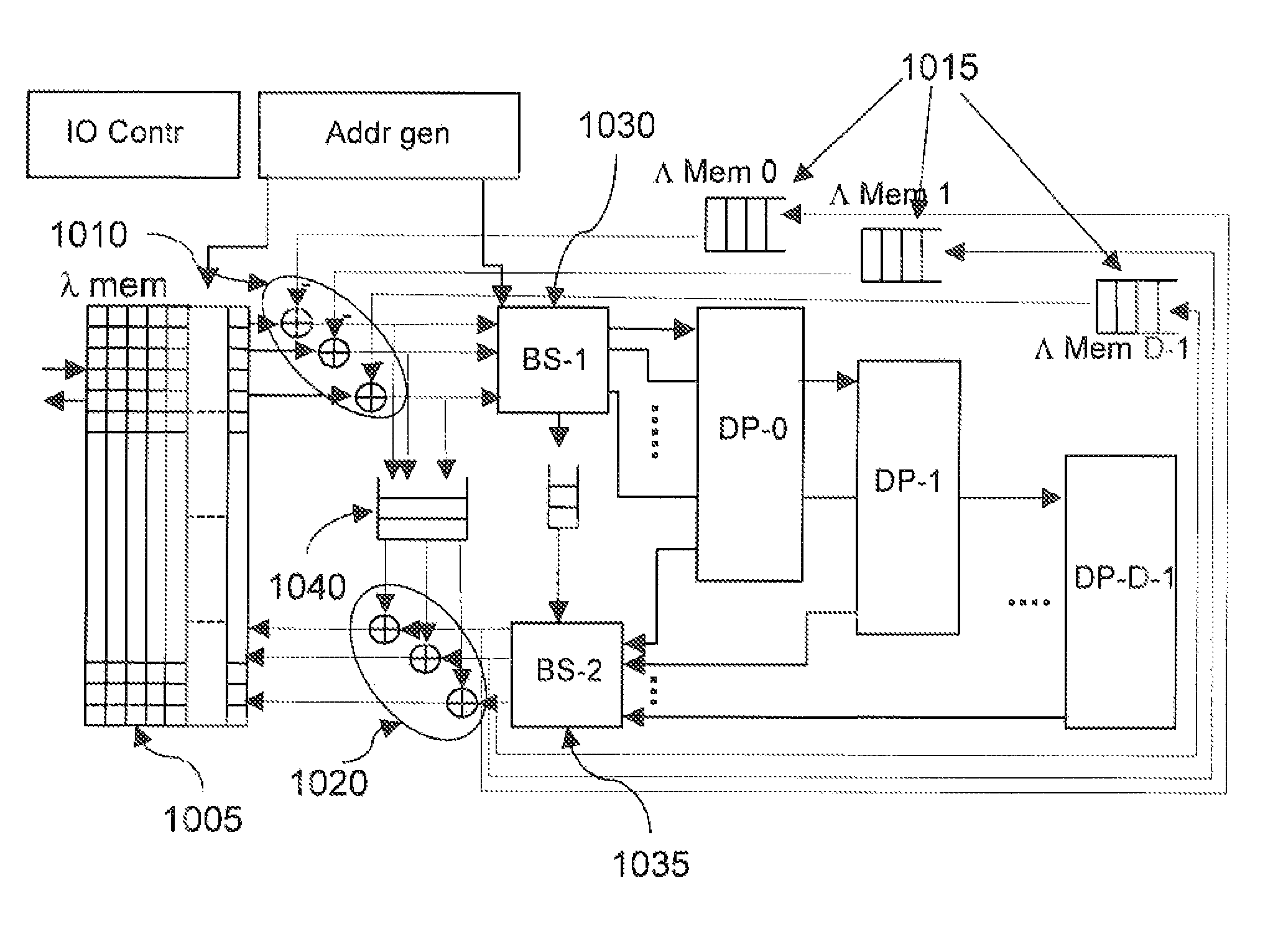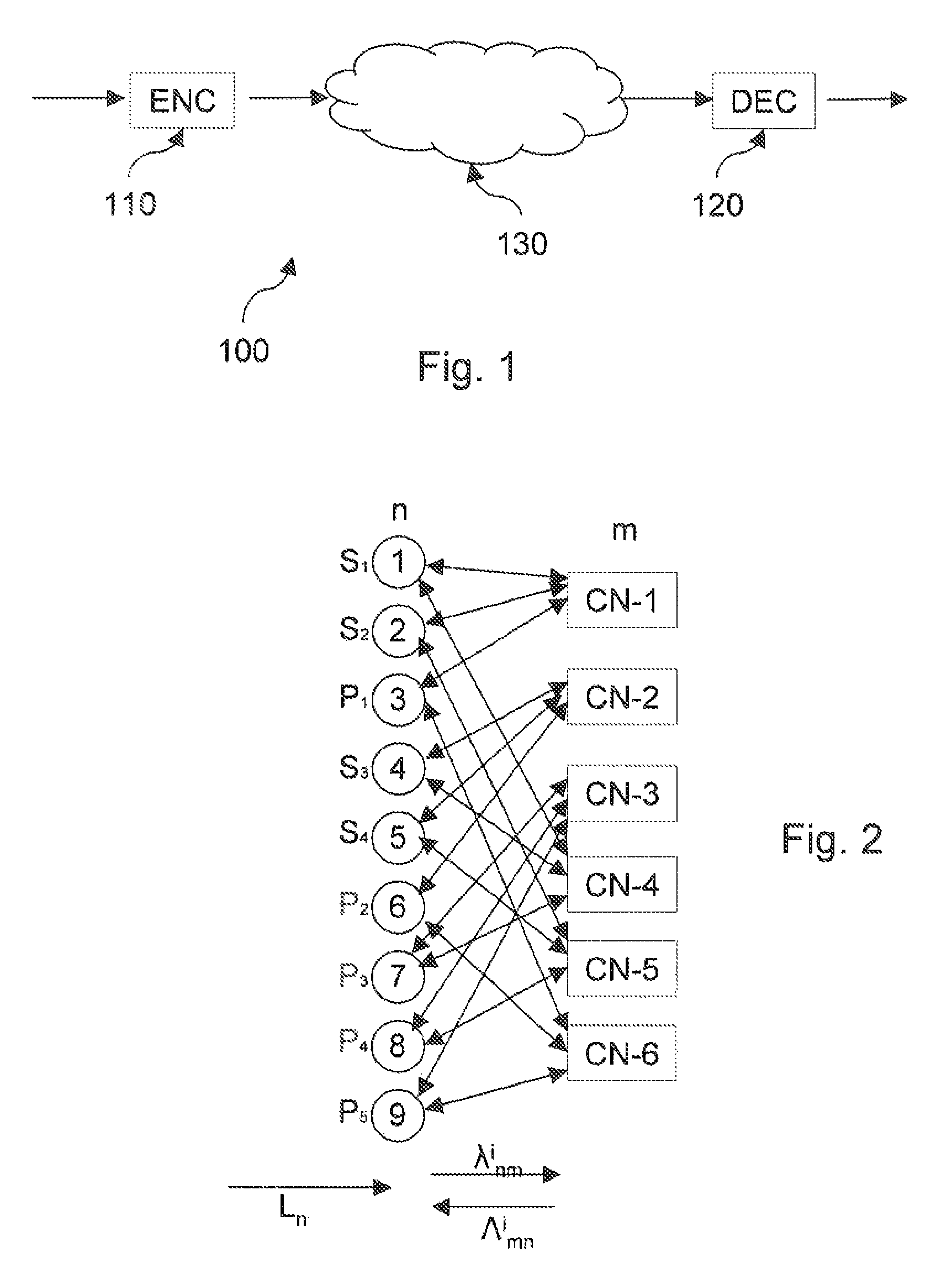Shuffled LDPC decoding
a ldpc decoding and decoding technology, applied in the field of ldpc decoding and ldpc decoding methods, can solve the problems of complex processing of multiple diagonals, inability to solve ldpc codes containing “multi-diagonals”, and possible transmission errors, so as to reduce the cost of the known ldpc decoding architectur
- Summary
- Abstract
- Description
- Claims
- Application Information
AI Technical Summary
Benefits of technology
Problems solved by technology
Method used
Image
Examples
Embodiment Construction
[0042]Where in the Figures same reference numerals are used, they represent the same functionality, unless specified differently. FIG. 1 shows a block diagram of an exemplary system 100 in which the invention may be used. The system includes an LDPC encoder 110 and an LDPC decoder 120. The encoded signal may be transmitted via a transmission medium 130, such as a wireless or wired network. It will be appreciated that the encoded signal may also be stored in a storage system such as a hard disk or optical storage. In this situation item 130 would represent the storage system. Many additional operations may occur which are not shown in FIG. 1, such as encrypting / decrypting, modulating / demodulating the signal, etc. Such operations are well-known and are not part of the invention.
[0043]LDPC encoding / decoding in itself is well-known. Here only a short description of the known aspects is given. In a simple example, it is the task of the encoder 110 to encode some binary information (usual...
PUM
 Login to View More
Login to View More Abstract
Description
Claims
Application Information
 Login to View More
Login to View More - R&D
- Intellectual Property
- Life Sciences
- Materials
- Tech Scout
- Unparalleled Data Quality
- Higher Quality Content
- 60% Fewer Hallucinations
Browse by: Latest US Patents, China's latest patents, Technical Efficacy Thesaurus, Application Domain, Technology Topic, Popular Technical Reports.
© 2025 PatSnap. All rights reserved.Legal|Privacy policy|Modern Slavery Act Transparency Statement|Sitemap|About US| Contact US: help@patsnap.com



